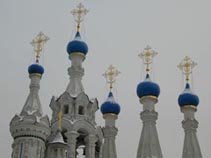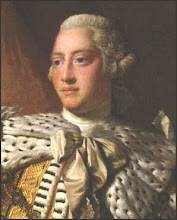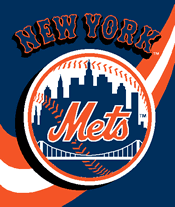
The holy, great, and Ecumenical Synod which by the grace of God and the will of the pious and Christ-loving Emperors, Constantine and Irene, his mother, was gathered together for the second time at Nice, the illustrious metropolis of Bithynia, in the holy church of God which is named Sophia, having followed the tradition of the Catholic Church, hath defined as follows:
Christ our Lord, who hath bestowed upon us the light of the knowledge of himself, and hath redeemed us from the darkness of idolatrous madness, having espoused to himself the Holy Catholic Church without spot or defect, promised that he would so preserve her: and gave his word to this effect to his holy disciples when he said: “Lo! I am with you always, even unto the end of the world,” which promise he made, not only to them, but to us also who should believe in his name through their word. But some, not considering of this gift, and having become fickle through the temptation of the wily enemy, have fallen from the right faith; for, withdrawing from the traditions of the Catholic Church, they have erred from the truth and as the proverb saith: “The husbandmen have gone astray in their own husbandry and have gathered in their hands nothingness,” because certain priests, priests in name only, not in fact, had dared to speak against the God-approved ornament of the sacred monuments, of whom God cries aloud through the prophet, “Many pastors have corrupted my vineyard, they have polluted my portion.”
And, forsooth, following profane men, led astray by their carnal sense, they have calumniated the Church of Christ our God, which he hath espoused to himself, and have failed to distinguish between holy and profane, styling the images of our Lord and of his Saints by the same name as the statues of diabolical idols. Seeing which things, our Lord God (not willing to behold his people corrupted by such manner of plague) hath of his good pleasure called us together, the chief of his priests, from every quarter, moved with a divine zeal and brought hither by the will of our princes, Constantine and Irene, to the end that the traditions of the Catholic Church may receive stability by our common decree. Therefore, with all diligence, making a thorough examination and analysis, and following the trend of the truth, we diminish nought, we add nought, but we preserve unchanged all things which pertain to the Catholic Church, and following the Six Ecumenical Synods, especially that which met in this illustrious metropolis of Nice, as also that which was afterwards gathered together in the God-protected Royal City.
We believe…life of the world to come. Amen.
We detest and anathematize Arius and all the sharers of his absurd opinion; also Macedonius and those who following him are well styled “Foes of the Spirit” (Pneumatomachi). We confess that our Lady, St. Mary, is properly and truly the Mother of God, because she was the Mother after the flesh of One Person of the Holy Trinity, to wit, Christ our God, as the Council of Ephesus has already defined when it cast out of the Church the impious Nestorius with his colleagues, because he taught that there were two Persons [in Christ]. With the Fathers of this synod we confess that he who was incarnate of the immaculate Mother of God and Ever-Virgin Mary has two natures, recognizing him as perfect God and perfect man, as also the Council of Chalcedon hath promulgated, expelling from the divine Atrium [αὐλῆς] as blasphemers, Eutyches and Dioscorus; and placing in the same category Severus, Peter and a number of others, blaspheming in divers fashions. Moreover, with these we anathematize the fables of Origen, Evagrius, and 550Didymus, in accordance with the decision of the Fifth Council held at Constantinople. We affirm that in Christ there be two wills and two operations according to the reality of each nature, as also the Sixth Synod, held at Constantinople, taught, casting out Sergius, Honorius, Cyrus, Pyrrhus, Macarius, and those who agree with them, and all those who are unwilling to be reverent.
To make our confession short, we keep unchanged all the ecclesiastical traditions handed down to us, whether in writing or verbally, one of which is the making of pictorial representations, agreeable to the history of the preaching of the Gospel, a tradition useful in many respects, but especially in this, that so the incarnation of the Word of God is shown forth as real and not merely phantastic, for these have mutual indications and without doubt have also mutual significations.
We, therefore, following the royal pathway and the divinely inspired authority of our Holy Fathers and the traditions of the Catholic Church (for, as we all know, the Holy Spirit indwells her), define with all certitude and accuracy that just as the figure of the precious and life-giving Cross, so also the venerable and holy images, as well in painting and mosaic as of other fit materials, should be set forth in the holy churches of God, and on the sacred vessels and on the vestments and on hangings and in pictures both in houses and by the wayside, to wit, the figure of our Lord God and Saviour Jesus Christ, of our spotless Lady, the Mother of God, of the honourable Angels, of all Saints and of all pious people. For by so much more frequently as they are seen in artistic representation, by so much more readily are men lifted up to the memory of their prototypes, and to a longing after them; and to these should be given due salutation and honourable reverence (ἀσπασμὸν καὶ τιμητικὴν προσκύνησιν), not indeed that true worship of faith (λατρείαν) which pertains alone to the divine nature; but to these, as to the figure of the precious and life-giving Cross and to the Book of the Gospels and to the other holy objects, incense and lights may be offered according to ancient pious custom. For the honour which is paid to the image passes on to that which the image represents, and he who reveres the image reveres in it the subject represented. For thus the teaching of our holy Fathers, that is the tradition of the Catholic Church, which from one end of the earth to the other hath received the Gospel, is strengthened. Thus we follow Paul, who spake in Christ, and the whole divine Apostolic company and the holy Fathers, holding fast the traditions which we have received. So we sing prophetically the triumphal hymns of the Church, “Rejoice greatly, O daughter of Sion; Shout, O daughter of Jerusalem. Rejoice and be glad with all thy heart. The Lord hath taken away from thee the oppression of thy adversaries; thou art redeemed from the hand of thine enemies. The Lord is a King in the midst of thee; thou shalt not see evil any more, and peace be unto thee forever.”
Those, therefore who dare to think or teach otherwise, or as wicked heretics to spurn the traditions of the Church and to invent some novelty, or else to reject some of those things which the Church hath received (e.g., the Book of the Gospels, or the image of the cross, or the pictorial icons, or the holy reliques of a martyr), or evilly and sharply to devise anything subversive of the lawful traditions of the Catholic Church or to turn to common uses the sacred vessels or the venerable monasteries, if they be Bishops or Clerics, we command that they be deposed; if religious or laics, that they be cut off from communion.
[
After all had signed, the acclamations began.]
The holy Synod cried out: So we all believe, we all are so minded, we all give our consent and have signed. This is the faith of the Apostles, this is the faith of the orthodox, this is the faith which hath made firm the whole world. Believing in one God, to be celebrated in Trinity, we salute the honourable images! Those who do not so hold, let them be anathema. Those who do not thus think, let them be driven far away from the Church. For we follow the most ancient legislation of the Catholic Church. We keep the laws of the Fathers. We anathematize those who add anything to or take anything away from the Catholic Church. We anathematize the introduced novelty of the revilers of Christians. We salute the venerable images. We place under anathema those who do not do this. Anathema to them who presume to apply to the venerable images the things said in Holy Scripture about idols. Anathema to those who do not salute the holy and venerable images. Anathema to those who call the sacred images idols. Anathema to those who say that Christians resort to the sacred images as to gods. Anathema to those who say that any other delivered us from idols except Christ our God. Anathema to those who dare to say that at any time the Catholic Church received idols.
Many years to the Emperors, etc., etc.










